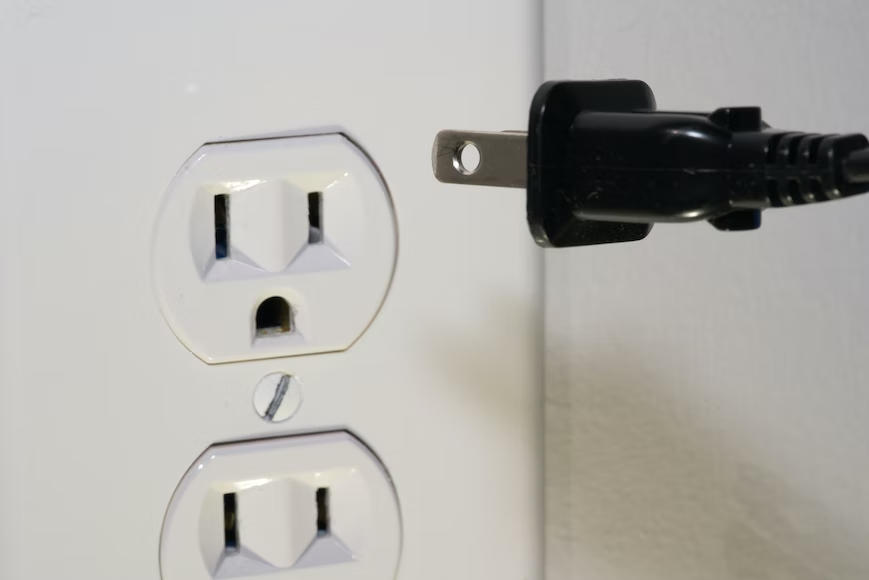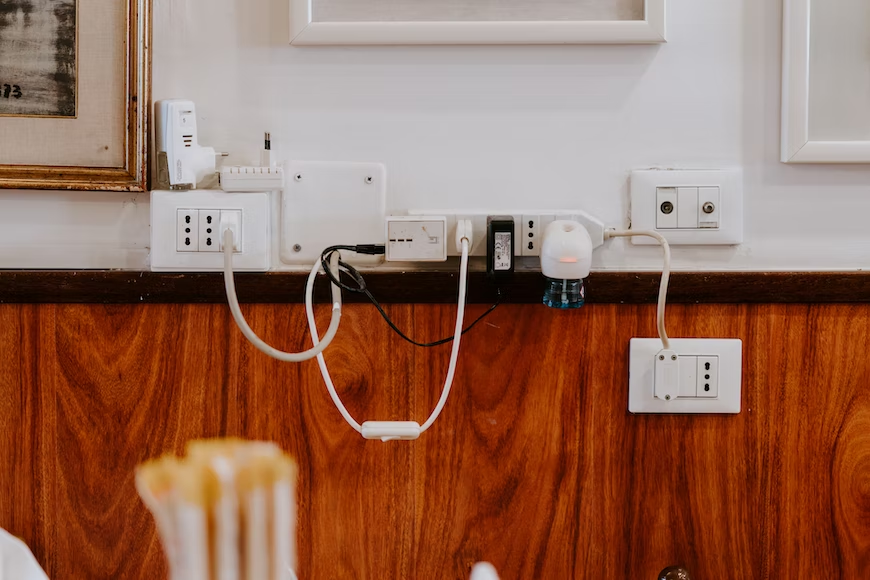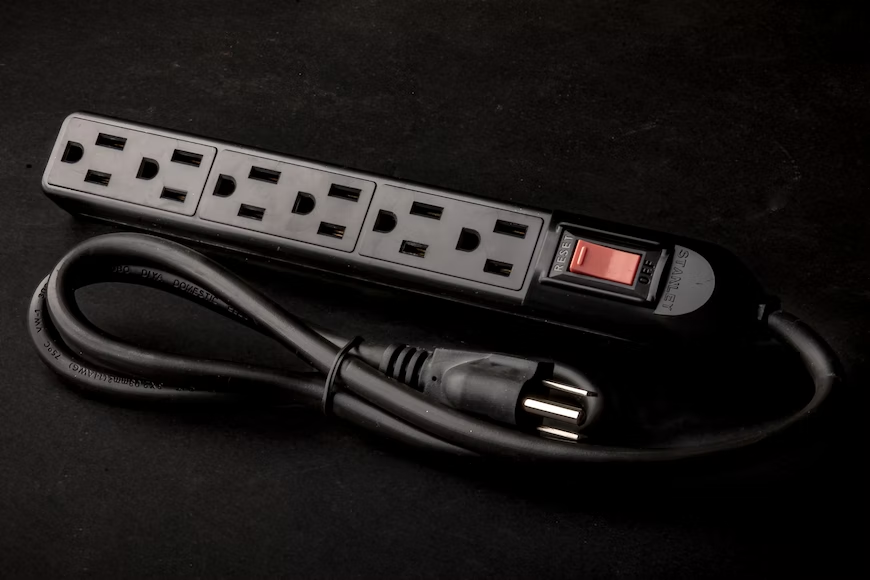Are there not enough outlets in your home to accommodate your current appliances and gadgets? A power strip is an effective solution, but it should be used cautiously as it’s designed primarily for computers and other low-power electronics.
If overloaded, breakers can trip or, worse yet, lead to a hazardous electrical fire caused by overheating. We’ll discuss what not to plug into a power strip, among other areas of concern.

What’s a Power Strip?
A power strip also referred to as an extension cord, is a device that provides additional electrical outlets for connecting various electronic and electrical appliances. It usually consists of a long cable with multiple sockets.
Most power strips, including the flat cord power strip, have a built-in surge protector, which helps protect your electronics from sudden voltage spikes and other electrical issues. Some power strips have safety features such as child locks or overload protection. Additionally, some models offer USB ports for charging mobile devices.
Uses of a Power Strip
A power strip is a device that can expand the number of electrical outlets in your home or office. These strips provide a convenient way to plug in several electronic devices simultaneously, saving space and energy costs. They’re versatile and valuable in a variety of other ways:
Expanding Outlet Capacity
A power strip is a perfect way to make the most of your existing outlets. If you have several electrical devices in one area but limited wall outlets, using a power strip can help solve that problem and ensure that all your appliances are easily connected.
Smart Technology
Many power strips come with built-in technology that can help you save energy and money. These features range from advanced surge protection to motion sensors that turn off the strip when no motion is detected.
Protection Against Overload
Power strips protect your devices against dangerous power surges, spikes, and overloads. Often these strips come with LED indicators that will alert you if your device is drawing too much power or if something is wrong with the strip itself.
Reducing Power Consumption
By using a power strip, you can reduce the energy your devices consume by turning off all connected electrical devices at once. This is especially helpful for those with multiple devices in one area, as it can help reduce your electricity bill and save energy overall.

7 Things to Avoid Plugging into Power Strips
To ensure your safety and avoid damaging your electronics, here are 7 things you should never plug into power strips.
- Heaters: Space heaters, electric blankets, and other heating devices draw excessive power for a single outlet to handle. This can lead to a potential fire hazard or circuit overload.
- Refrigerators: These should never be plugged into a power strip due to their high wattage requirements and the chance of causing a power surge.
- Hair Dryers: These hairstyling tools also require too much electricity for a single outlet, and the risk of overload is high.
- Vacuum Cleaners: Not only do vacuums draw high wattage, but they often include specialized protection features that can be damaged when connected to a power strip.
- Computers: A computer’s power supply must be connected directly to a wall outlet for its surge protector and other safety features to work correctly.
- Lamps with Halogen Bulbs: The high wattage of halogen bulbs can lead to an overload on the circuit, potentially resulting in a fire.
- Power Tools: Many power tools are designed to be plugged directly into an outlet and should never be connected to a power strip. This is due to their high wattage requirements and the risk of damaging both the tool and the power strip.
Benefits of Using a Power Strip
By using a power strip, you can benefit from additional outlets, the convenience of not having to unplug each device when it’s time for bed, and the added advantage of a surge protector.
Here are the benefits of using a power strip and why it should be part of your home setup.

Additional Outlets
One significant benefit of using a power strip is having access to additional outlets. With traditional wall outlets, you’re limited to just two outlets per wall outlet, but with a power strip, you can have up to twelve. This means more convenience and less fussing around with cords and plugs when working on multiple projects.
Convenience
A power strip also helps to make life easier in the evening when it’s time to unplug all your devices. With a power strip, you can quickly turn off the entire strip with one flip of the switch, meaning that you don’t have to go around unplugging each device one by one. This makes for a quicker and less complicated evening routine.
Surge Protection
Among the most vital benefits of using a power strip is its added surge protection. Power strips come equipped with built-in circuit breakers and sometimes even additional safety features such as fireproofing or over-voltage protection. This can help to protect your electronic devices from an unexpected surge, saving you money in the long run.
Features of a Good Power Strip
- Surge Protection: A good power strip should have surge protection to protect any connected electronics from potential damage caused by sudden power surges. Look for one with an LED indicator light, so you know it’s working as intended, and your devices are protected.
- Outlet Quantity: A good power strip should provide enough outlets to accommodate your electronic devices. If you’re using many electronics, look for one with additional side-mounted outlets to extend the reach.
- Management Features: To ensure ease of use and reduce clutter, look for a power strip with individual switch controls for each outlet, removable cord management clips to keep cords neat, and a flexible design that allows you to adjust the orientation of the power strip.
- Durability: To ensure maximum lifespan and dependable performance, it’s crucial to choose a power strip built with durable materials and a thick protective casing to guard against possible shock hazards.

Bottom Line
Always be mindful of the things you are plugging into a power strip. Be sure to overload it with only a few devices and appliances, which can lead to electrical shock or fire hazards. Also, avoid plugging in large electronics such as refrigerators and air conditioners, as these can draw too much power for the strip to handle.
